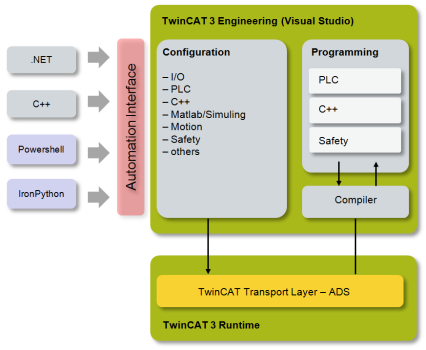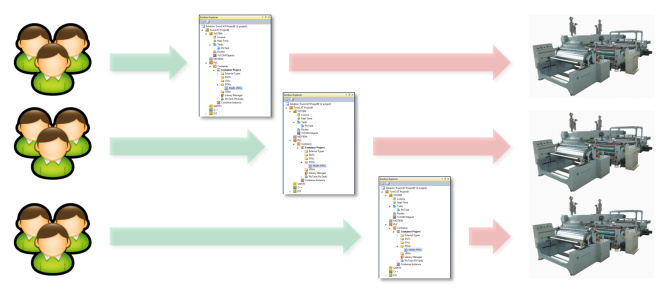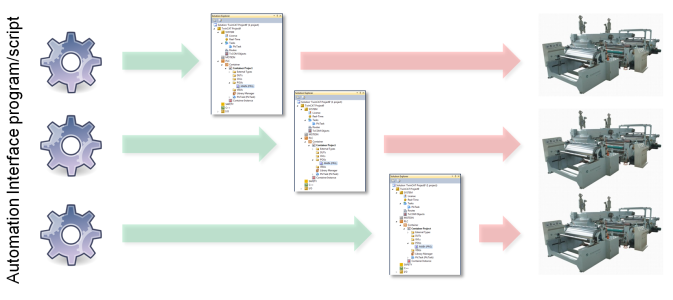Overview
The TwinCAT Automation Interface enables the automatic creation and manipulation of TwinCAT XAE configurations via programming/scripting code. The automation of a TwinCAT configuration is available through so-called automation interfaces which can be accessed from all COM-capable programming languages (e.g. C++ or .NET) and also from dynamic script languages - e.g. Windows PowerShell, IronPython or even legacy VBscript.

TwinCAT Automation Interface enables an efficient engineering process by giving customers the possibility to automate the configuration of a full TwinCAT project configuration.
Traditionally, a machine configuration had to be manually adapted to each new project or had even to be created from scratch, which could not only involve a tremendous amount of engineering time and therefore costs but is also error-prone because of human mistakes.

With TwinCAT Automation Interface, the process of adapting TwinCAT configurations to a new environment or even create new TwinCAT configurations from scratch can be automated according to the customer’s needs.

Readers should continue with the following topics:
Basics
Topic | Description |
|---|---|
Describes how to create or open a TwinCAT configuration | |
Describes how to navigate through a TwinCAT configuration | |
Describes how to access custom parameters of an item. This is important to access configuration parameters of a TwinCAT tree item. |
Best practice
Topic | Description |
|---|---|
Describes how to create EtherCAT devices and connect them to an EtherCAT topology | |
Describes how add address information to an offline created configuration |
Additionally, this documentation also includes a full API reference of all interfaces. The How to and Sample sections offer a free composition of script code fragments, configuration steps and demo projects. They also contain an unsorted and growing list of "real-world" samples.